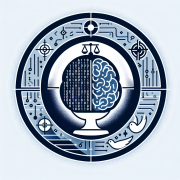The Impact of SAML in Modern Authentication and Cloud Security
Exploring the Significance of SAML in Modern Authentication Protocols
Security Assertion Markup Language (SAML) has become a cornerstone in the landscape of modern authentication and authorization protocols. With the rapid shift of businesses towards cloud-based solutions, the importance of a robust, secure, and efficient single sign-on (SSO) mechanism cannot be overstated. This article delves into the intricacies of SAML, its role within my consulting practice at DBGM Consulting, Inc., and its broader implications on the tech industry.
Understanding SAML
SAML is an open standard that enables identity providers (IdPs) to pass authorization credentials to service providers (SPs). This means that with SAML, users can log in once and gain access to multiple applications, eliminating the need for multiple passwords and streamlining the user experience.
Given my background in cybersecurity and cloud solutions, and having closely worked on migrating enterprises to cloud platforms during my tenure at Microsoft, I appreciate the elegance and security SAML brings to the table. It not only simplifies access management but also significantly tightens security around the authentication process.
Why SAML Matters for Businesses
- Enhanced Security: SAML adopts a secure XML-based protocol, ensuring that data transmission between the IdP and SP is both encrypted and signed.
- Reduced IT Costs: By minimizing the need for multiple passwords and accounts, SAML can significantly reduce the overhead associated with user account management.
- Improved User Experience: Users benefit from SSO capabilities, accessing multiple applications seamlessly without the need to remember and enter different credentials.
Integrating SAML Within Cloud Solutions
My firm, DBGM Consulting, Inc., specializes in crafting tailor-made cloud solutions for our clients. Incorporating SAML into these solutions allows for a smooth transition to cloud-based services without compromising on security. Whether it’s through workshops, process automation, or designing machine learning models, understanding the pivotal role of SAML in authentication processes has been instrumental in delivering value to our clientele.
Case Study: Leveraging SAML for a Multi-Cloud Deployment
In one notable project, we facilitated a client’s move to a multi-cloud environment. The challenge was to ensure that their workforce could access applications hosted across different cloud platforms securely and efficiently. By implementing a SAML-based SSO solution, we enabled seamless access across services, irrespective of the cloud provider, thereby enhancing productivity and ensuring robust security posture.
Looking Ahead: The Future of SAML
As we move forward, the evolution of SAML and its adoption will play a crucial role in shaping secure, cloud-based enterprise environments. It’s compelling to see the potential of how SAML might evolve, particularly with advancements in artificial intelligence and machine learning technologies. My optimism about AI and its integration into our cultural and professional fabric makes me particularly excited about the future of SAML and authentication technologies.
Conclusion
In conclusion, the advent of SAML has marked a significant milestone in the realm of cybersecurity, offering a blend of security, efficiency, and user convenience. For businesses aiming to navigate the complexities of cloud migration and digital transformation, understanding and implementing SAML is indispensable. At DBGM Consulting, we pride ourselves on staying at the forefront of these technologies, ensuring our solutions not only meet but exceed the expectations of our clients.









Leave a Reply
Want to join the discussion?Feel free to contribute!